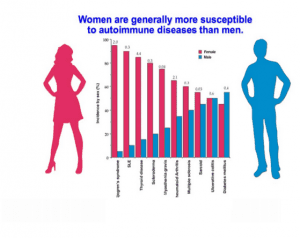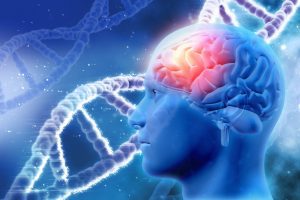PMS
What products on this website help the effects of PMS?
Biotics Research Nutritional Supplements Primary Nutrients: PMS VITS are not all listed here but are on MyVItes
1. PMT or EQUI-FEM – 2 tablets, 3 times daily with meals.
2. BIO-C PLUS 1000 – 1 tablet, 3 times daily after meals.
3. M S M POWDER
4. OSTEO-B PLUS – 3 tablets, once daily after a meal.
5. BIOMEGA INFO -3 – 4 capsules, once daily after a meal
6. E-MULSION 200 – 1 capsule, 3 times daily
GAMMANOL FORTE 2 Tabs, 3 times daily
8. MG-ZYME – 1 tablet, 3 times daily with meals.
9. B6 PHOSPHATE – 1 tablet, 3 times daily.
10.ZN-ZYME FORTE – 1 tablet, 3 times daily
11. B12/FOLATE PLUS– 2 capsules, 3 times daily with meals.
#6- #11 are Specific Nutrients: When symptoms or condition begins to subside, gradually, as needed, wean yourself from the Specific Nutrients & stay on the Primary Nutrients. If any symptoms re-occur resume Specific Nutrients.
What is the link to hormone balance and depression with PMS?
PMS-D (D = depression) is the least common type and is relatively rare in its pure form. Its key symptom is depression, which is usually associated with low levels of neurotransmitters in the central nervous system. In PMS-D patients, this is probably due to increased breakdown of the neurotransmitters as a result of decreased levels of estrogen (in contrast to PMS-A, which shows the opposite results). The decreased ovarian estrogen output has been attributed to a stress-induced increase in adrenal androgen and/or progesterone secretion.
Why is there fluid retention with a menstrual cycle?
PMS-H (H = hyperhydration) is characterized by weight gain (greater than three pounds), abdominal bloating and discomfort, breast tenderness and congestion, and occasional swelling of the face, hands, and ankles. These symptoms are due to an increased fluid volume, secondary to an excess of the hormone aldosterone which causes increased fluid retention. Aldosterone excess during the premenstrual phase of PMS-H patients may arise due to stress, estrogen excess, magnesium deficiency, or excess salt intake.
What dietary assistance in general would be most helpful for PMS?
General Recommendations Here are the important steps to take to help you prioritize and implement the various measures detailed above:
1. Evaluate your PMS symptoms by studying the 4 types of PMS as shown above. Dietary Recommendations a. Drink 2 to 3 ounces of water every 30 minutes while awake each day (no well water or water containing fluoride or chlorine).
b. Eliminate all refined carbohydrates – especially sugar, processed foods, alcohol and foods containing caffeine such as coffee, tea, cola and chocolate.
c. Eliminate all hydrogenated fats and oils. Use fish oils, coconut oil and extra virgin olive oil as your only source of dietary oils.
d. Increase raw foods and quality protein especially fish and sea vegetables.
e. If there is obesity, insure total daily carbohydrate intake is limited to not more than 60 grams.
f. Follow a vegetarian or predominantly vegetarian diet
g. Reduce exposure to environmental estrogens in foods
h. Keep processed table salt intake to a minimum, use an unprocessed, deep-mined salt.
What should be ruled out when depression occurs with PMS?
Rule out hypothyroidism as a hormonal cause of depression. Determine your basal body temperature. If your basal body temperature is below 97.8 degrees Fahrenheit, or if you are suffering from other symptoms associated with PMS, consult your physician for complete thyroid-function testing. Determine whether depression may be a mental factor by reading Dianetics the Modern Science of Mental Health. Use caution with the checmical solutions and avoid any chemical(drug) solutions if possible. If in a dangerous state of mind any medication should be used only temporary and only as a very last resort until the actual cause is located.
What are the types of PMS?
PMS-A (A = anxiety) is the most common symptom category and is found to be strongly associated with excessive estrogen and deficient progesterone levels during the premenstrual phase. Common symptoms of patients in this category are anxiety, irritability, and emotional instability.
PMS-C (C = carbohydrate craving) is associated with increased appetite, craving for sweets, headache, fatigue, fainting spells, and heart palpitations. Glucose tolerance tests (GTT) performed on PMS-C patients during the five to ten days before their menses show a flattening of the early part of the curve (which usually implies excessive secretion of insulin in response to sugar consumption), whereas during other parts of the menstrual cycle their GTT is normal. Currently, there is no clear explanation for this phenomenon, although an increased cellular capacity to bind insulin has been postulated. This increased binding capacity for insulin appears to be hormonally regulated, but other factors may also be involved, such as a high salt intake or decreased magnesium or prostaglandin levels.
PMS-D (D = depression) is the least common type and is relatively rare in its pure form. Its key symptom is depression, which is usually associated with low levels of neurotransmitters in the central nervous system. In PMS-D patients, this is probably due to increased breakdown of the neurotransmitters as a result of decreased levels of estrogen (in contrast to PMS-A, which shows the opposite results). The decreased ovarian estrogen output has been attributed to a stress-induced increase in adrenal androgen and/or progesterone secretion.
PMS-H (H = hyperhydration) is characterized by weight gain (greater than three pounds), abdominal bloating and discomfort, breast tenderness and congestion, and occasional swelling of the face, hands, and ankles. These symptoms are due to an increased fluid volume, secondary to an excess of the hormone aldosterone which causes increased fluid retention. Aldosterone excess during the premenstrual phase of PMS-H patients may arise due to stress, estrogen excess, magnesium deficiency, or excess salt intake.
Is PMS from a single cause?
PMS Classification : In an attempt to bring some order to the clinically and metabolically confusing picture of PMS, several experts have created classification systems that sort PMS sufferers into subgroups. The system with which we have the most experience was developed by Dr. Guy Abraham; it divides PMS into four distinct subgroups. Each subgroup is linked to specific symptoms, hormonal patterns, and metabolic abnormalities. Note that one rarely experiences a particular subgroup in a pure form; usually there is an overlap of one or more of the subgroups.
What types of PMS causes anxiety?
PMS-A (A = anxiety) is the most common symptom category and is found to be strongly associated with excessive estrogen and deficient progesterone levels during the premenstrual phase. Common symptoms of patients in this category are anxiety, irritability, and emotional instability.
What is the type of PMS that creates cravings,headache and fatigue?
PMS-C (C = carbohydrate craving) is associated with increased appetite, craving for sweets, headache, fatigue, fainting spells, and heart palpitations. Glucose tolerance tests (GTT) performed on PMS-C patients during the five to ten days before their menses show a flattening of the early part of the curve (which usually implies excessive secretion of insulin in response to sugar consumption), whereas during other parts of the menstrual cycle their GTT is normal. Currently, there is no clear explanation for this phenomenon, although an increased cellular capacity to bind insulin has been postulated. This increased binding capacity for insulin appears to be hormonally regulated, but other factors may also be involved, such as a high salt intake or decreased magnesium or prostaglandin levels
What is the link to hormone balance and depression with PMS?
PMS-D (D = depression) is the least common type and is relatively rare in its pure form. Its key symptom is depression, which is usually associated with low levels of neurotransmitters in the central nervous system. In PMS-D patients, this is probably due to increased breakdown of the neurotransmitters as a result of decreased levels of estrogen (in contrast to PMS-A, which shows the opposite results). The decreased ovarian estrogen output has been attributed to a stress-induced increase in adrenal androgen and/or progesterone secretion.
What are the most common causes of menstrual problems?
By far the greatest cause of menstrual problems are long term history of an improper diet, lack of exercise and long-term pelvic or lower spine instability.
If the diet, exercise, nutritional supplements,etc are unsuccessful what should always be ruled out from a medical specialist?
Diseases and malformations of the menstrual-related organs and glands must be ruled out by a competent gynecologist. However, for the most part, the services of a gynecologist should be limited to ruling out and/or treating only these diseases and malformations. The medical treatment for most other menstrual difficulties is archaic, unsuccessful, frequently nonchalant and often extremely dangerous and disabling.
What is the So-Called Holistic Treatment?
The treatment of menstrual problems is not simple, but if proper, is usually extremely rewarding. Today there are all kinds of doctors treating people in ways they promote as holistic; and the treatment of menstrual problems is no exception. However,using a little Vitamin B-6, a little Magnesium or some amino acids for every woman with menstrual problems is poor therapy. We call this a shotgun approach and it does little to get at the underlying cause of each case of menstrual difficulties.
What is the typical Medical approach that one could receive?
The major role played by gynecologist when treating women with menstrual problems is to rule out gross pathological changes. And frankly, these sometimes require hysterectomy. But these cases are very rare. At least 50% of the time, a medical diagnosis regarding menstrual problems will be incorrect.
When would surgery be essential ?
Except for infection or an absolute need for surgery, just about all other medical treatment for these problems is improper. Of course, worst of all is the unnecessary hysterectomy. But almost as bad is the routine prescribing a lifetime of hormones. Without giving any thought whatsoever as to the cause of abnormal hormone levels, some gynecologists wreak havoc on women’s lives by routinely prescribing these powerful agents.
What about the use of prescription Hormones to treat menstrual trouble?
Hormone therapy is frequently effective in relieving menstrual symptoms, however it does little or nothing to correct the underlying cause of the problem. When the hormone therapy is stopped, the problems start up again. And worst of all, hormone therapy carries a sad legacy of side effects, the worst being increased odds for cancer later in life.
What is there then to Do about the discomfort?
Every case of menstrual problems and dysmenorrhea is different. And each woman must be evaluated individually to determine the cause of the problems she is experiencing. However, there are similarities in many, if not most, women with these types of problems.
-
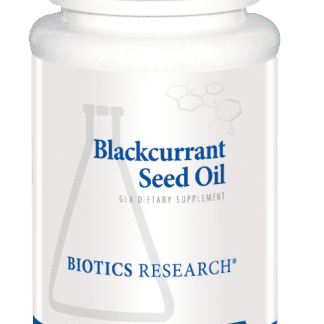
Blackcurrant Seed Oil, 60 Capsules
Register -
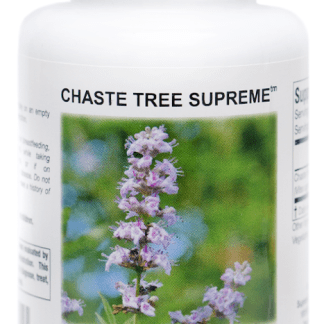
Chaste Tree Supreme
$29.99 Add to cart -
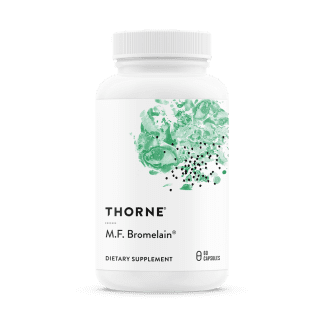
Magnesium CitraMate 150 mg, 90 Vegetarian Capsules
$19.00 Add to cart

